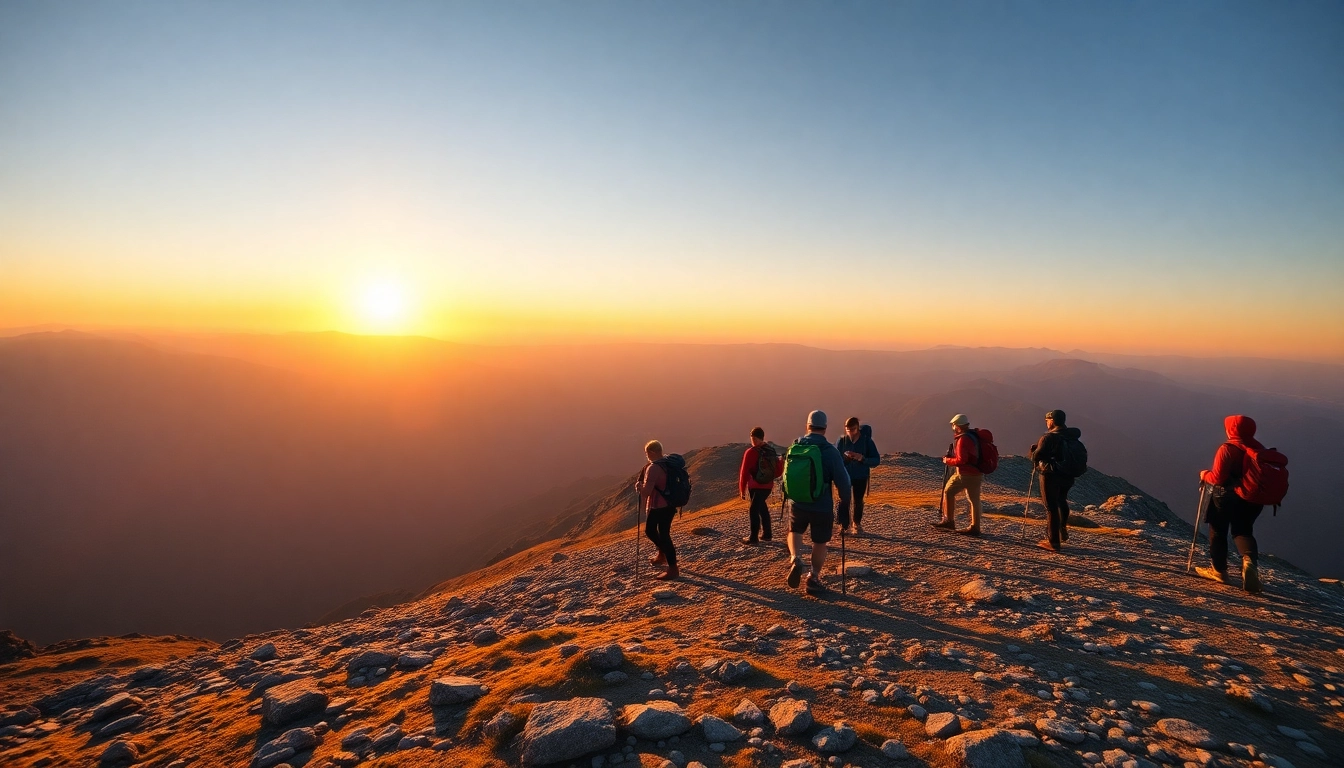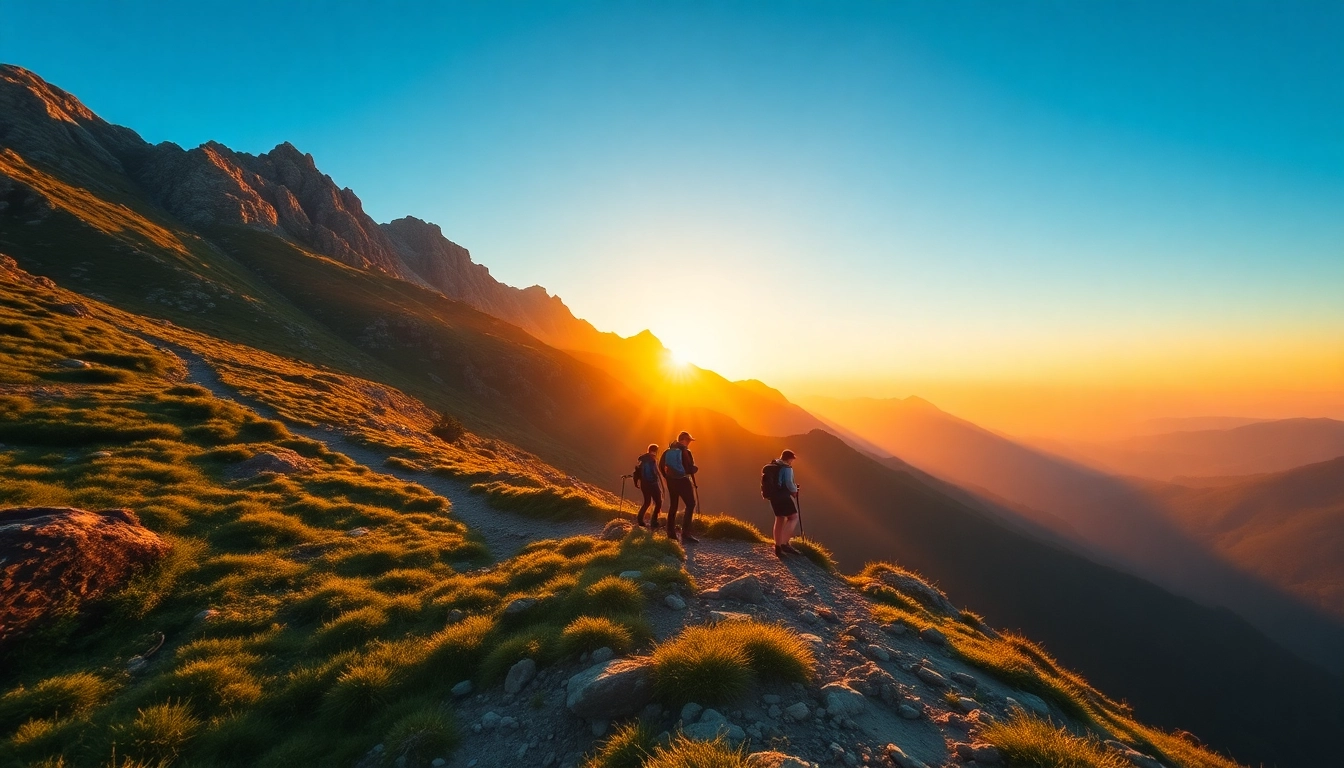Understanding Guided Treks: Definition and Benefits
What Is a Guided Trek and Why Choose It?
A guided trek is an organized outdoor journey led by experienced guides through natural landscapes such as mountains, forests, or remote wilderness areas. Unlike independent hiking, guided treks offer a structured exploration with professional guidance, logistical support, and safety assurance. These excursions are tailored to various skill levels and often include educational components about local flora, fauna, history, and culture.
For travelers seeking an immersive experience without the hassle of planning every detail, a guided trek presents an ideal option. It allows adventurers to focus on the journey while experts handle route navigation, safety protocols, and logistical arrangements.
Choosing a guided trek is particularly advantageous for those venturing into unfamiliar or challenging terrains. It enhances the overall experience by providing local insights, hands-on support, and access to remote or protected areas that might be inaccessible to independent travelers. Whether you’re a seasoned hiker or a novice eager to explore new environments, guided treks ensure a memorable, educational, and safe adventure.
Furthermore, guided treks often incorporate cultural interactions with local communities, enriching travelers’ understanding of the region’s traditions, way of life, and history. This cultural immersion deepens the trekking experience beyond mere physical activity, making it more meaningful and impactful.
Advantages of Guided versus Self-Guided Treks
When evaluating guided versus self-guided treks, several key benefits distinguish the former as the preferred choice for many travelers:
- Expertise and Local Knowledge: Guided treks are led by professionals who possess extensive knowledge of the terrain, weather conditions, and safety procedures. They can provide historical, ecological, and cultural context, enriching your understanding of the environment.
- Safety and Security: Guides are trained to handle emergencies, navigate complex routes, and implement safety protocols. This minimizes risks associated with altitude sickness, adverse weather, wildlife encounters, or navigation errors.
- Logistical Support: Guided treks typically include arrangements for transportation, permits, accommodations, and meals. This alleviates planning stress, allowing participants to focus solely on experiencing the trek.
- Community and Social Experience: Traveling with a group fosters camaraderie, cultural exchanges, and shared memories. It’s especially beneficial for solo travelers or those seeking a sense of community in their adventure.
- Access to Remote or Protected Areas: Certain areas require permits or guidance to enter legally or sustainably. Guided treks ensure compliance with local regulations and conservation efforts.
Conversely, self-guided treks appeal to highly independent explorers who prefer complete control over their itinerary and pace. However, they demand advanced planning, thorough route research, and greater risk management. For most travelers, guided treks offer a safer, more educational, and enjoyable experience.
How Guided Treks Enhance Safety and Experience
Safety is paramount in outdoor adventures, especially in remote or high-altitude environments. Guided treks address this concern through comprehensive risk management strategies:
- Experienced Leadership: Guides are trained to recognize early signs of altitude sickness, dehydration, or injury, and to implement appropriate interventions.
- Route Planning and Navigation: Guides utilize GPS technology, maps, and local knowledge to choose optimal paths, avoid hazards, and adapt to changing conditions.
- Emergency Response Preparedness: Equipped with first aid kits, communication devices, and contingency plans, guides can coordinate rescue operations if needed.
- Local Cultural and Environmental Awareness: Guides foster respectful interaction with local communities and educate trekkers on eco-friendly behavior, reducing environmental impact.
Beyond safety, guided treks significantly elevate the overall experience. Participants gain insights into the environment’s ecology, geology, and cultural significance—transforming a mere hike into an educational journey. Guides often share stories, tradition insights, and scientific facts, making the trek not only physically stimulating but mentally enriching.
Additionally, guided groups can access exclusive viewpoints, wildlife habitats, or protected sites that might be off-limits to independent trekkers. This privilege allows for a deeper connection with nature and enhances the scenic and photographic value of the expedition.
Planning Your Guided Trek: Essential Tips
Selecting the Right Guided Trek for Your Fitness Level
The first step in planning a successful guided trek is assessing your physical fitness and experience. Treks vary from easy walks through lush forests to strenuous high-altitude mountain crossings. To choose appropriately, consider:
- Height and Distance: Evaluate the total elevation gain, daily distances, and expected pace.
- Terrain Difficulty: Be honest about your experience with rugged or steep terrains.
- Acclimatization Needs: Higher altitudes require a gradual ascent to prevent altitude sickness.
- Medical Conditions: Consult your healthcare provider if you have health issues that might affect physical exertion.
Most guided operators outline detailed difficulty levels for their treks, often categorizing them as beginner, intermediate, or advanced. For newcomers, starting with an easier, well-supported trek is advisable, ensuring enjoyment without overexertion. Experienced trekkers may seek challenging routes with overnight stays in mountain huts or bivouac setups for a more intense adventure.
Choosing Reputable Guided Trek Operators in Indonesia
Indonesia offers a diverse array of trekking opportunities, from volcanic summits to pristine jungles. Selecting a reputable operator is critical for safety, quality, and sustainability. Consider these factors when choosing:
- Certification and Licensing: Ensure the company complies with local regulations and holds relevant permits.
- Experience and Local Knowledge: Prefer operators with extensive experience, knowledgeable guides, and positive reviews.
- Safety Record: Investigate their safety protocols, emergency procedures, and past incident handling.
- Sustainability and Community Engagement: Opt for operators committed to eco-friendly practices and supporting local communities.
- Customizable Options: Look for companies offering tailored itineraries, flexible schedules, and inclusive packages.
In Indonesia, regions such as Lombok, Bali, Komodo, and Sumatra boast specialized guided trekking services. For Lombok, trusted local operators focus on eco-tourism, cultural insights, and adventure activities, providing tailored experiences for diverse travelers.
Preparing Gear and Supplies for a Guided Trek
Proper preparation ensures safety and comfort during your trek. Essential gear depends on the destination, season, and terrain but generally includes:
- Clothing: Moisture-wicking base layers, insulating mid-layers, waterproof jackets, and suitable footwear (hiking boots or shoes).
- Backpack: Durable with enough capacity for supplies, secured comfortably.
- Navigation: Maps, GPS devices, or guides’ instructions.
- Shelter and Sleep System: Tents, sleeping bags, and mats if camping is involved.
- Food and Water: High-energy snacks, hydration systems, and water purification tablets.
- Safety Equipment: First aid kit, headlamps or flashlights, multi-tools, and sunscreen.
Consult your guiding operator for a precise gear list tailored to your specific trek. Training in packing efficiently and testing equipment beforehand can save you from potential discomfort or on-trail issues.
Top Destinations for Guided Treks in Indonesia
Lombok: Hidden Trails and Scenic Wonders
Lombok, an island neighboring Bali, offers a wealth of guided trekking experiences that reveal its diverse landscapes—from lush rainforests to volcanic peaks. Its iconic Rinjani Volcano is one of Indonesia’s most popular trekking destinations, attracting adventurers seeking a challenging multi-day hike. Guided Rinjani treks typically include acclimatization, camping on the crater rim, and panoramic views of the crater lake and surrounding islands.
Beyond Rinjani, Lombok’s lesser-known trails meander through rice terraces, waterfalls, and traditional villages. Guided treks here emphasize sustainable tourism and cultural exchange, offering authentic insights into Sasak traditions and local lifestyles.
For those looking for shorter or easier routes, lombok’s Jeep-assisted hikes and mountain walks provide spectacular vistas without extensive mountaineering experience.
Bali and Beyond: Unique Guided Trekking Routes
While Bali is famous for its beaches, it also boasts a vibrant trekking scene. Guided hikes through the volcanic landscapes of Mount Batur or Mount Agung famously combine adventure with spiritual and cultural exploration. These treks typically start early morning for sunrise views, often including visits to temples, local markets, and natural hot springs.
Further afield, the less-trodden trails of West Papua, Kalimantan, and Sulawesi feature guided jungle expeditions and mountain climbs that challenge even seasoned travelers. These immersive treks are led by expert guides who ensure safety in remote environments while sharing insights into indigenous cultures and ecological diversity.
Whether it’s ascending active volcanoes or exploring dense rainforests, guided treks in these regions allow visitors to experience Indonesia’s biodiversity responsibly and authentically.
What to Expect on a Guided Trek in These Destinations
While each destination offers unique landscapes and experiences, some common elements characterize Indonesian guided treks:
- Pre-trek Orientation: Guides often conduct briefings on safety, itinerary, environmental regulations, and cultural etiquette.
- Gradual Acclimatization: Especially at high altitudes, treks include rest days to help bodies adapt and prevent altitude sickness.
- Scenic and Cultural Highlights: Expect visits to local villages, traditional ceremonies, and scenic viewpoints commonly inaccessible without guidance.
- Environmental Conservation: Emphasis on Leave No Trace principles and respecting wildlife and plant life.
With expert guidance, trekkers are more likely to encounter wildlife, reach breathtaking peaks, and connect intimately with Indonesia’s rich cultural tapestry.
Best Practices for a Successful Guided Trek
Following Your Guide’s Instructions and Safety Protocols
Adhering to instructions is vital for safety and enjoyment. Guides typically provide guidance on navigation, pace, and environmental conduct. Following these instructions helps prevent accidents and preserves the integrity of fragile ecosystems. Pay attention during orientation sessions, respect trail boundaries, and communicate openly about any discomfort or concerns.
Additionally, always carry required safety gear and be prepared for sudden weather changes. If you encounter wildlife, maintain a respectful distance and avoid disturbing habitats.
Respecting Nature and Local Cultures
Responsible trekking involves minimizing environmental impact. Stick to established paths, avoid littering, and refrain from collecting plants or souvenirs. Engage with local communities respectfully, observing their customs and dress codes, and supporting local artisans and businesses.
Learning basic greetings or phrases in the local language demonstrates respect and fosters positive interactions. Respecting cultural sites and traditions preserves Indonesia’s rich heritage for future generations.
Capturing Memories and Staying Mindful
While photographing landscapes and cultural moments enriches your trip, ensure that photography does not disturb wildlife or locals. Practice mindfulness by immersing yourself fully in the environment—appreciate the sounds, sights, and sensations. This presence enhances your emotional connection and ensures a more meaningful experience.
Keep a travel journal, engage with fellow trekkers, and take time to reflect on each day’s highlights. These habits help internalize your adventure and create lasting memories.
Post-Trek: Maximizing Your Adventure Experience
Sharing Feedback and Appreciating Local Guides
Providing constructive feedback to your guide and tour operator is essential for improving services and maintaining high standards. Express appreciation for guides who demonstrate professionalism, cultural sensitivity, and expert knowledge. Many operators value testimonials and reviews that highlight safety, educational value, and overall satisfaction.
Also, consider supporting local guides and communities directly by purchasing crafts or participating in cultural activities arranged after the trek.
Reflecting on Your Guided Trek Journey
Post-trek reflection helps you assess what you learned and experienced. Think about the landscapes seen, cultural interactions, personal achievements, and lessons learned. Sharing stories with friends, family, or fellow travelers can deepen your appreciation and inspire future adventures.
Maintaining a travel journal or creating a photo album preserves memories. Consider writing a detailed review online to help future trekkers make informed decisions.
Planning Future Guided Adventure Trips
Your successful guided trek may spark a desire to explore more regions or pursue different types of adventure travel. Use insights gained from your previous experience to select new destinations that match your interests and fitness level. Research various operators, read reviews, and stay updated on upcoming tours.
Remember that each region offers unique ecosystems and cultural treasures. Whether you wish to revisit Indonesia’s volcanic landscapes, explore untouched jungles, or venture into other countries, continued planning and education will maximize your future guided trekking pursuits.
Embracing responsible travel practices and supporting local communities will ensure that your adventures contribute positively to the regions visited.

